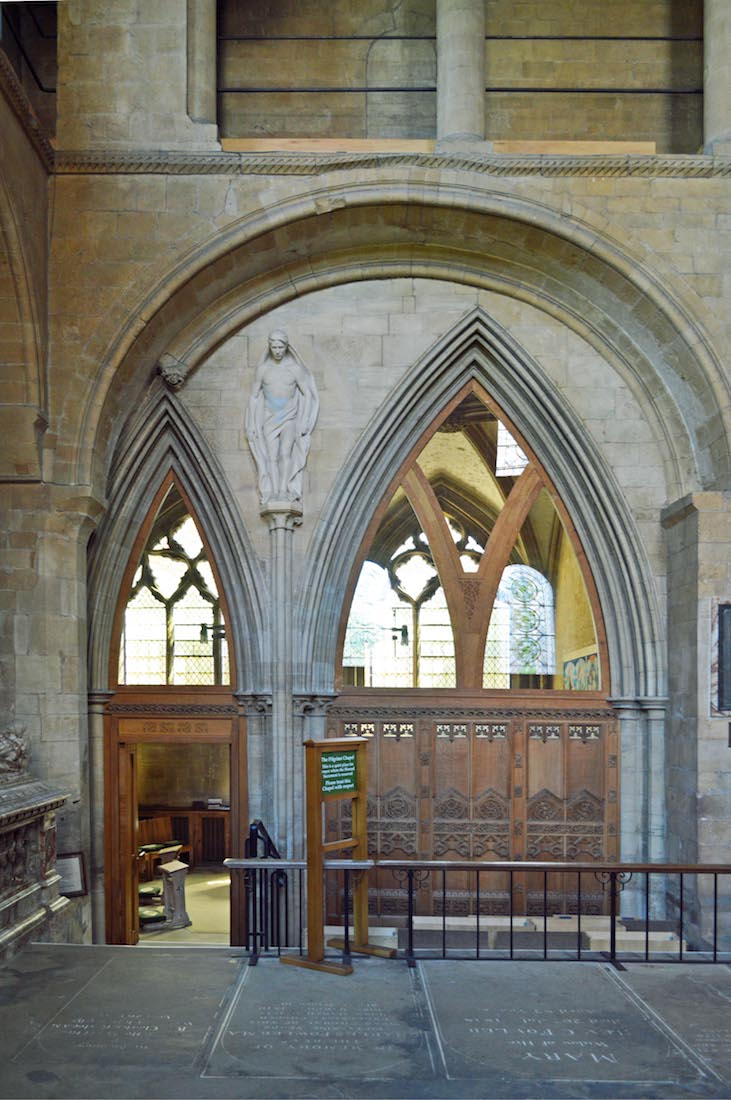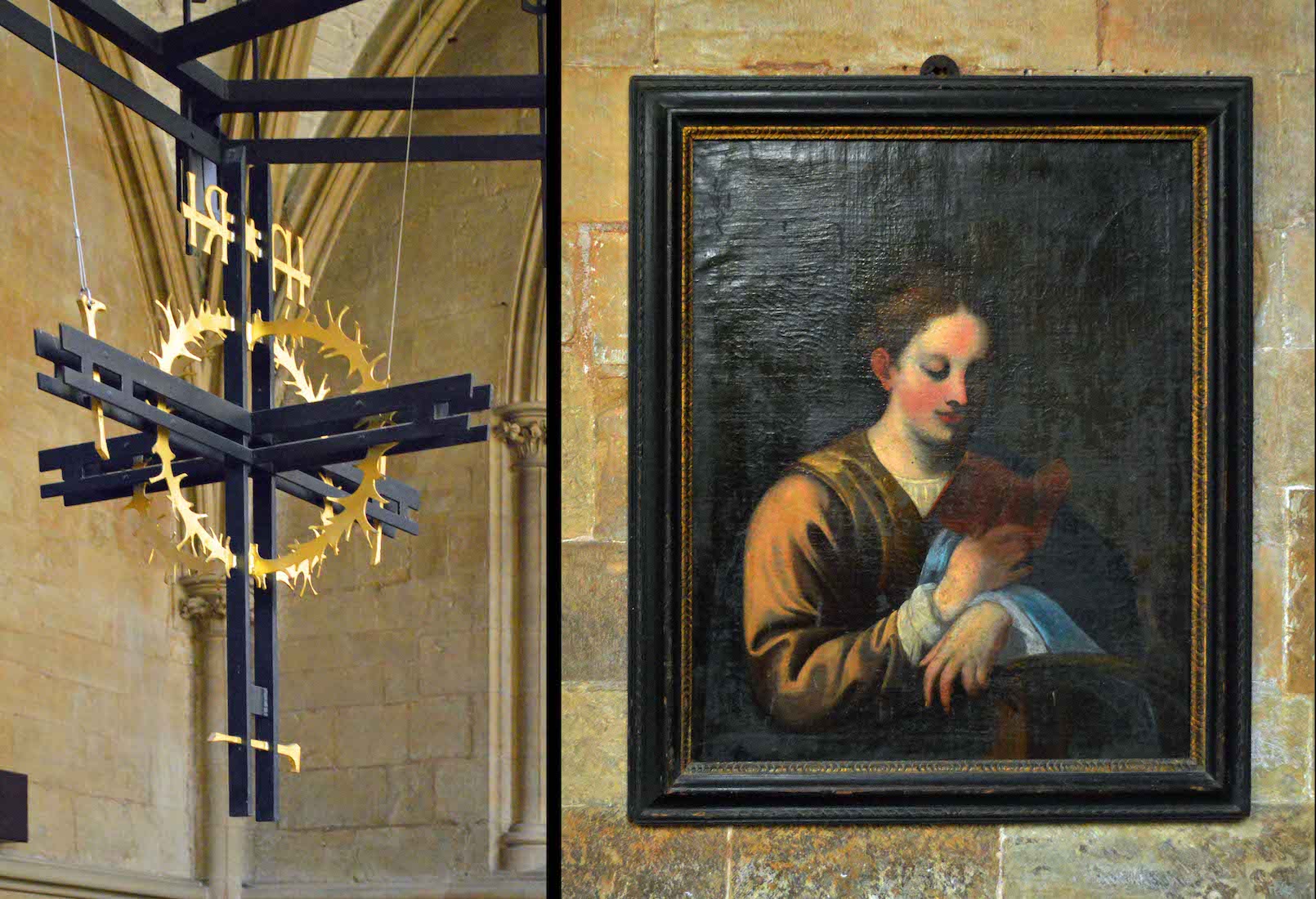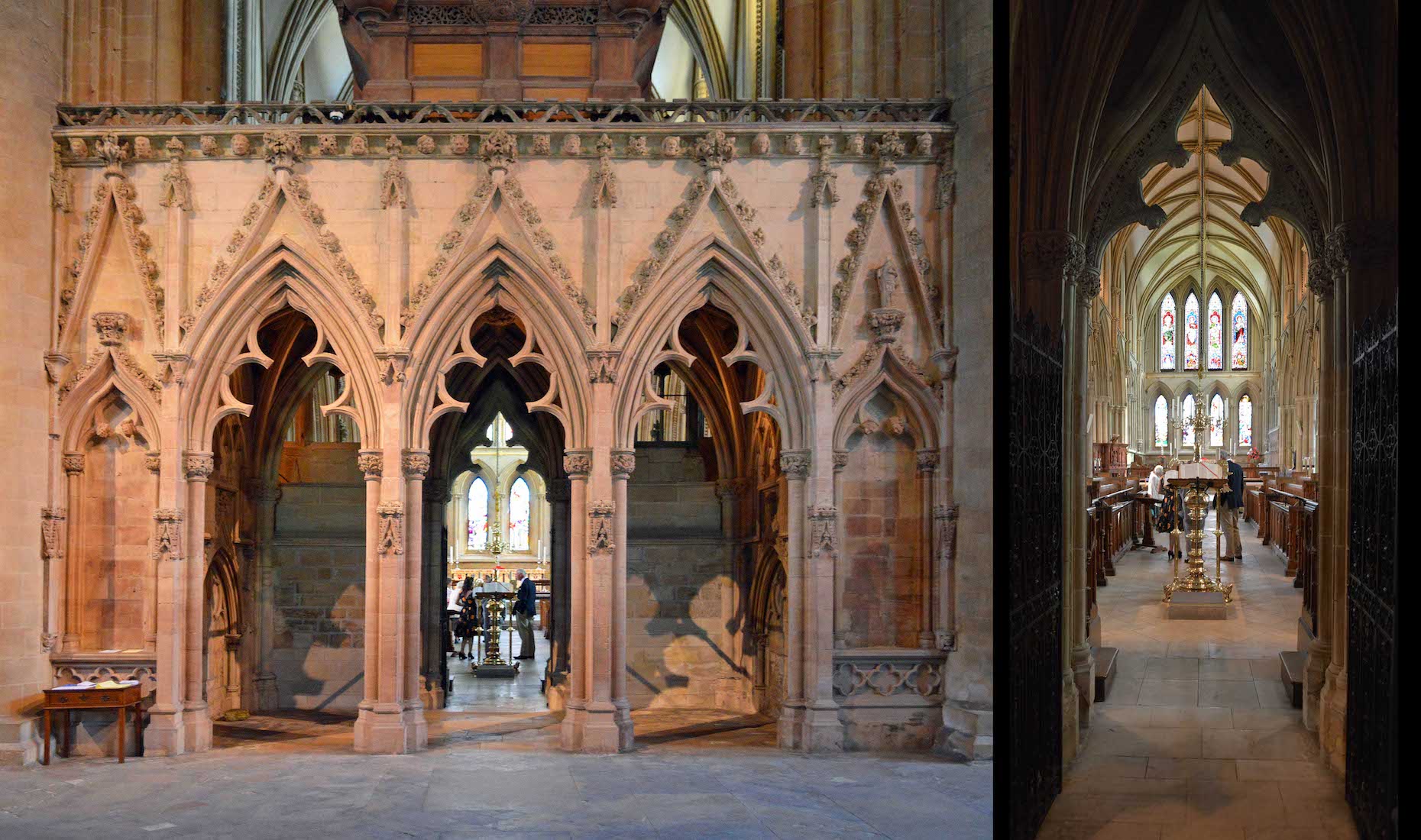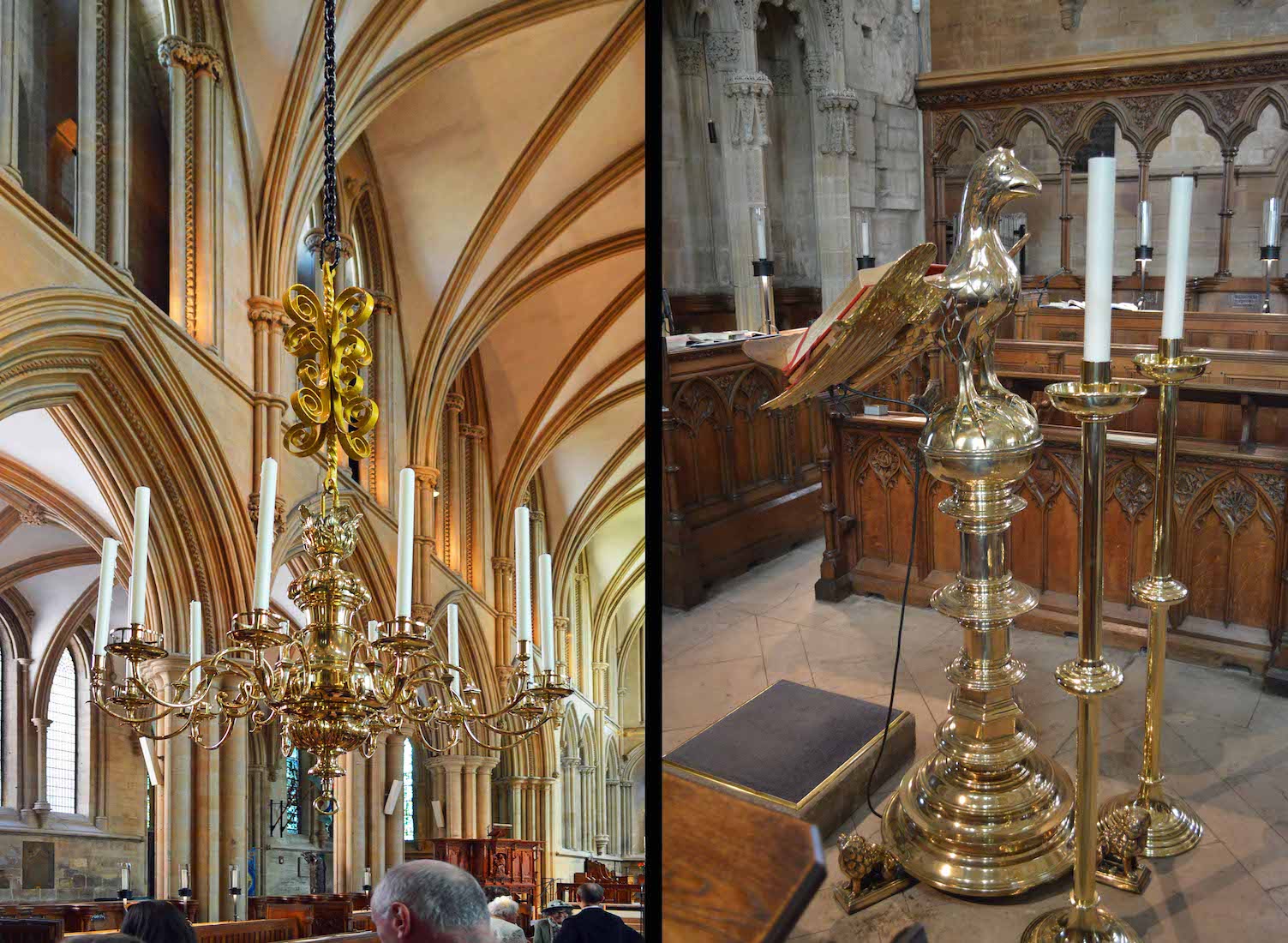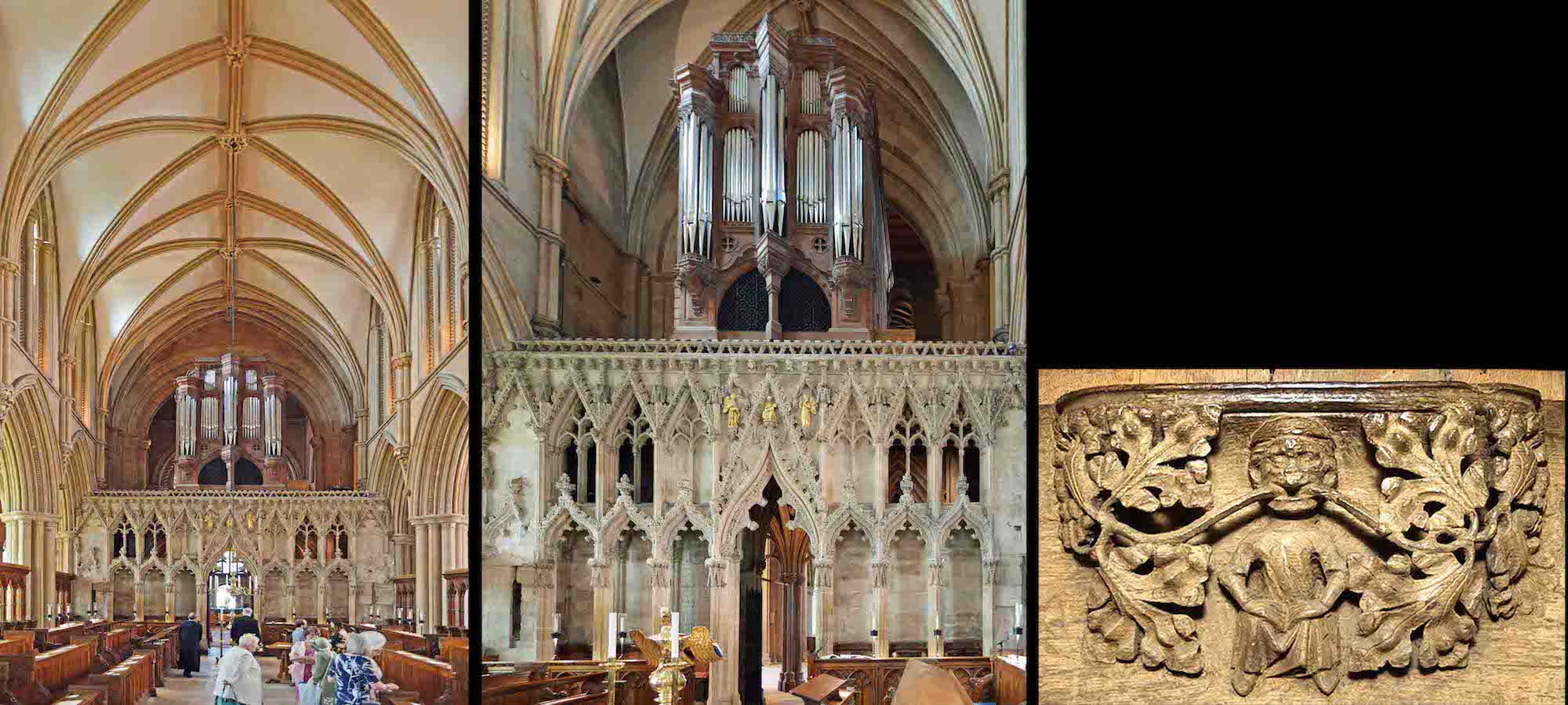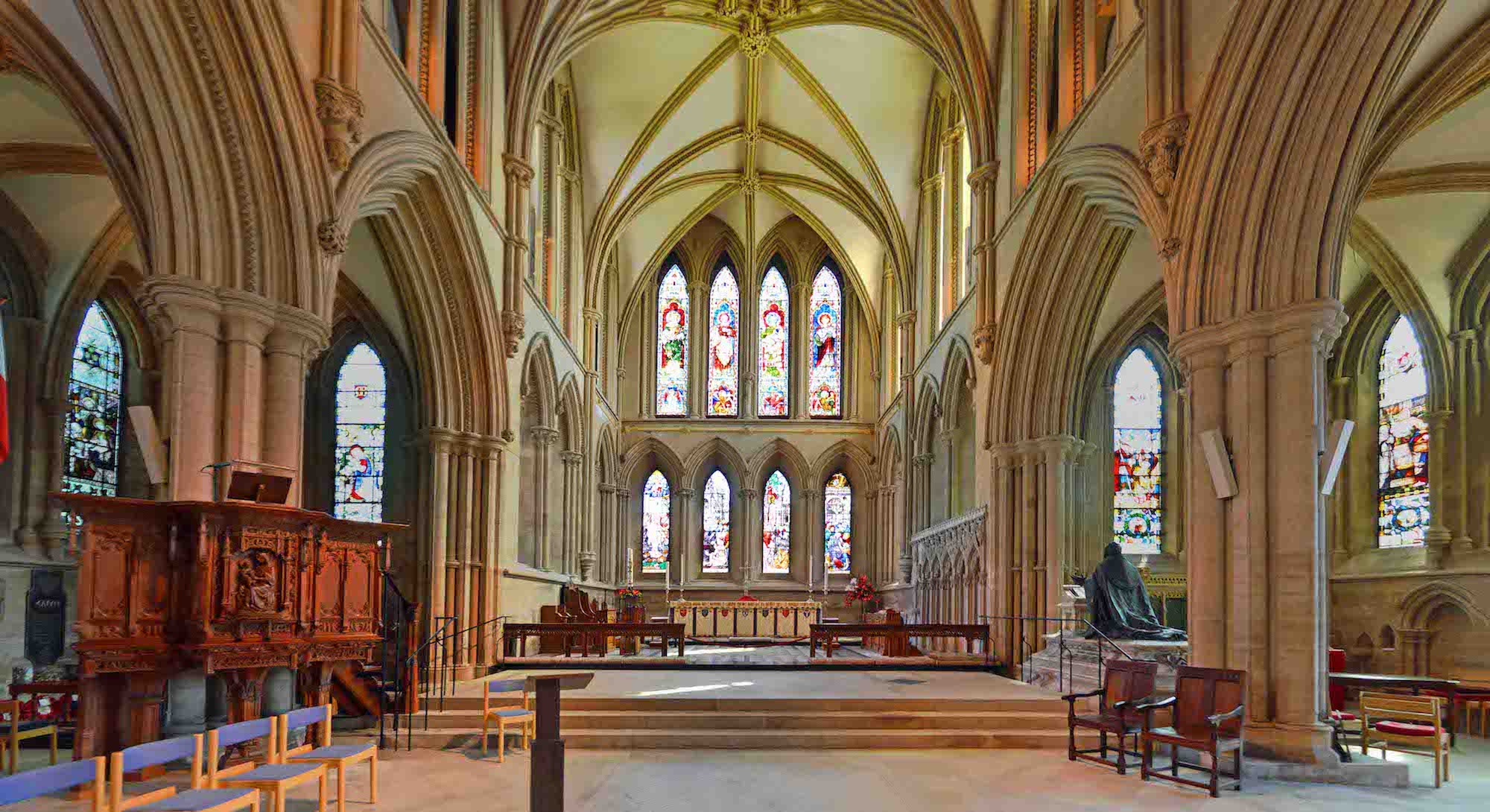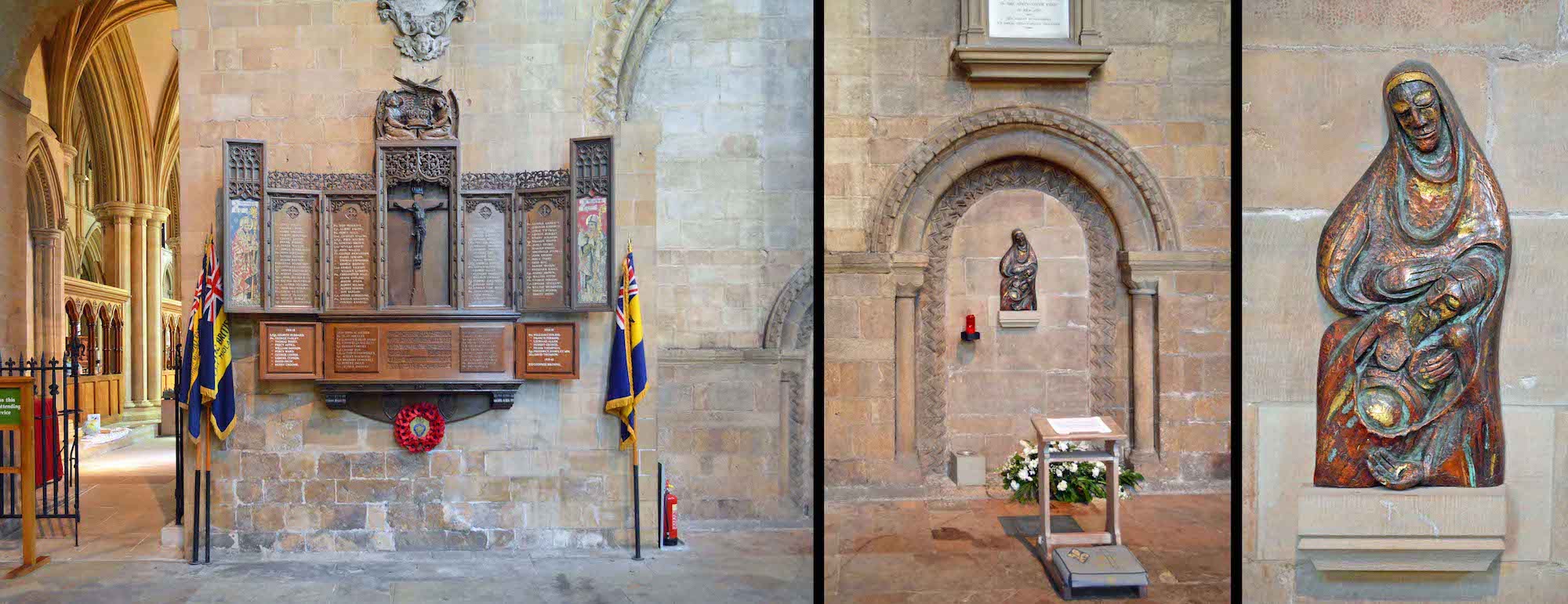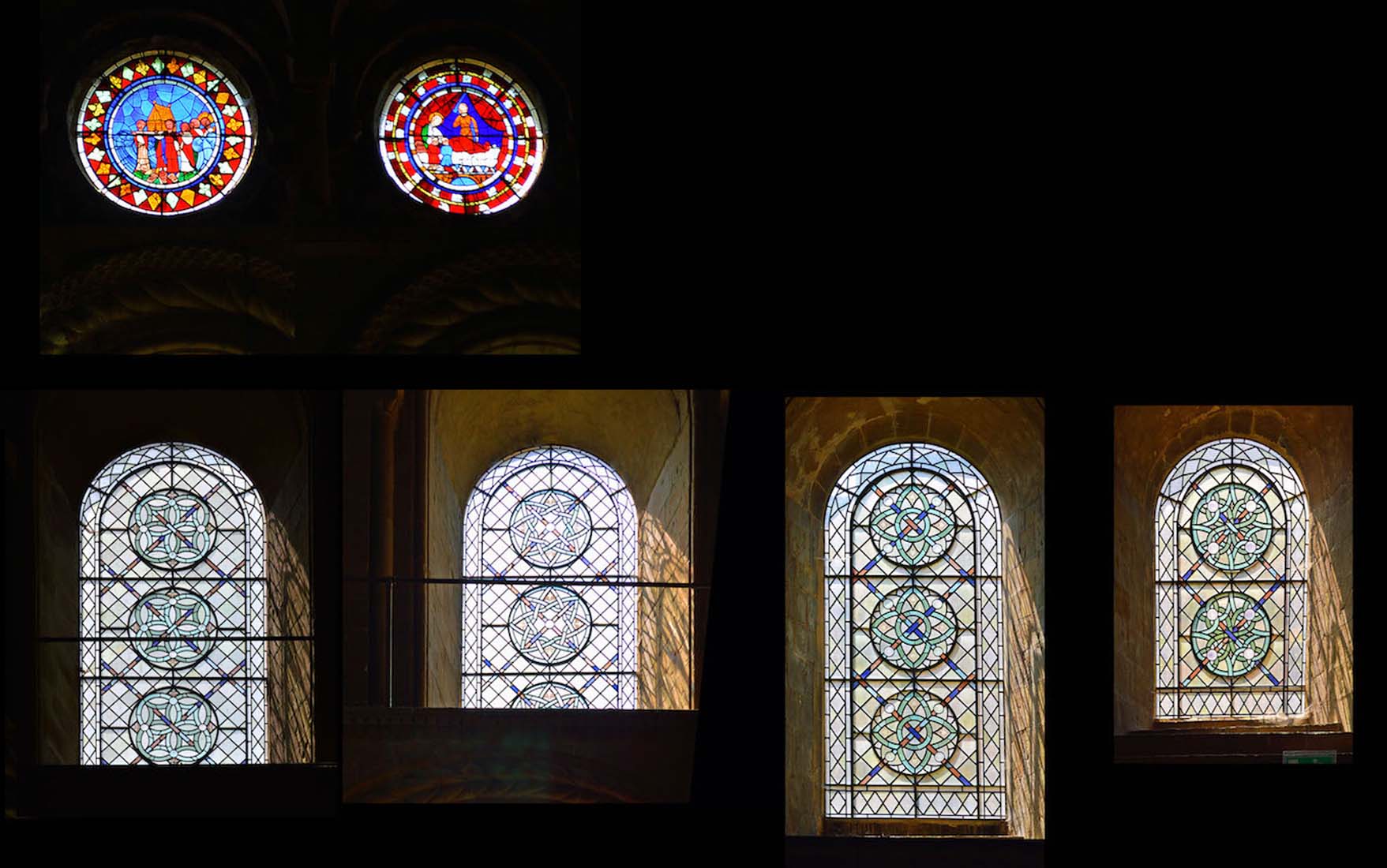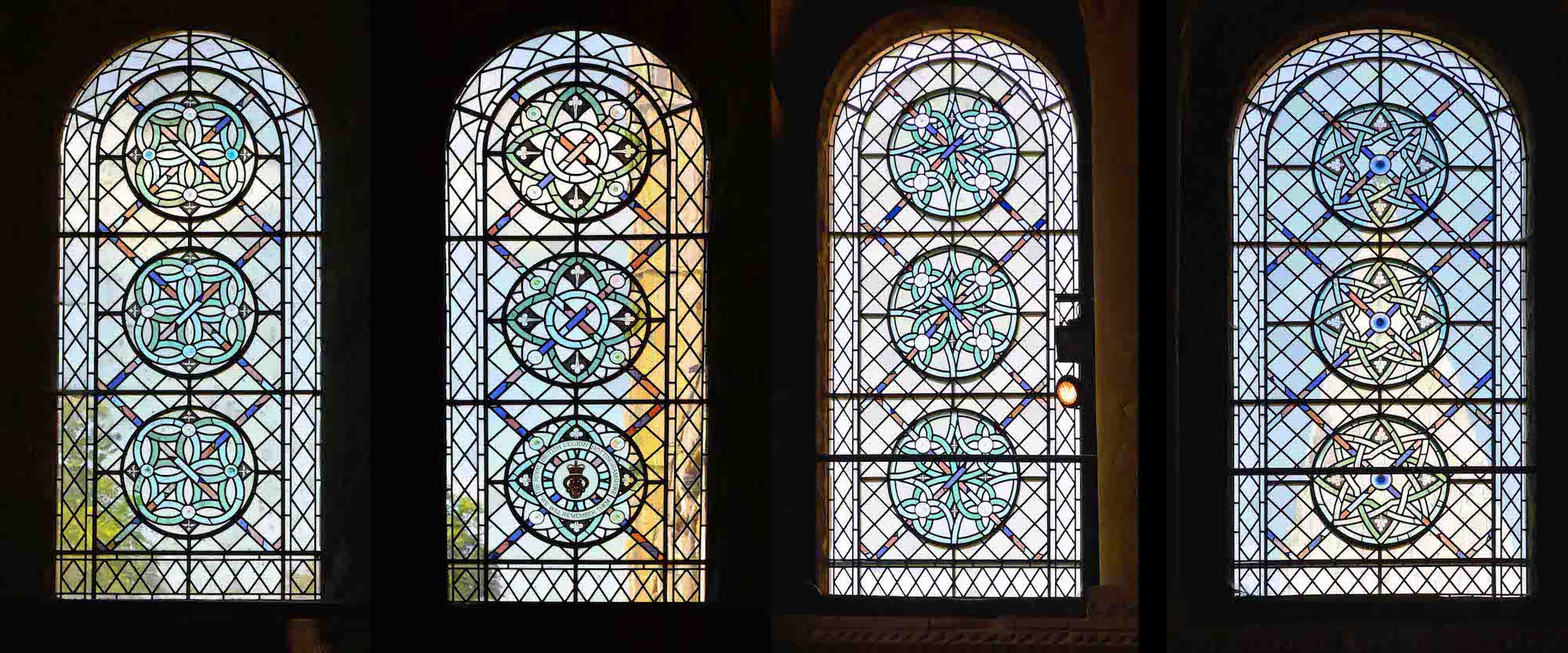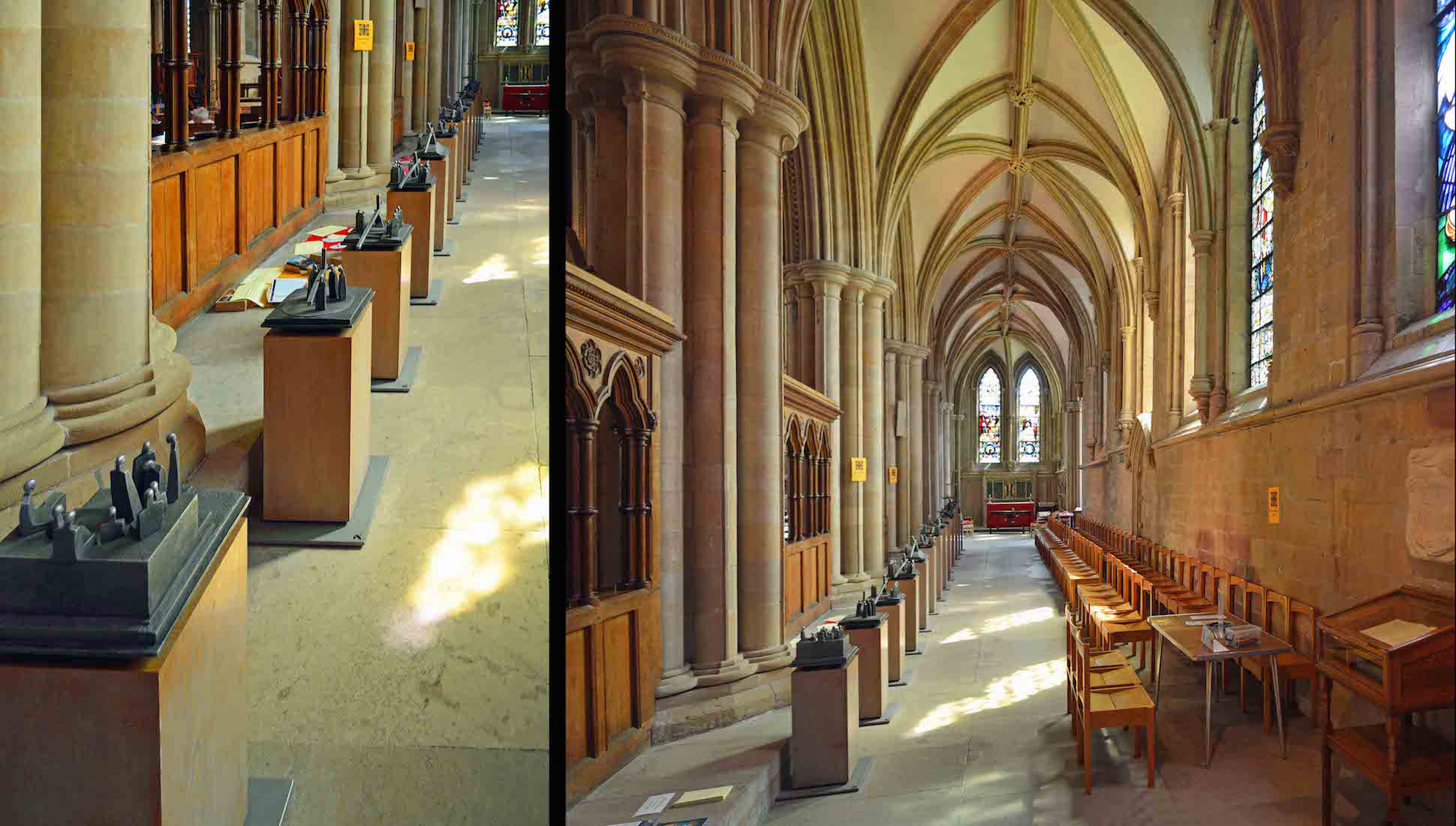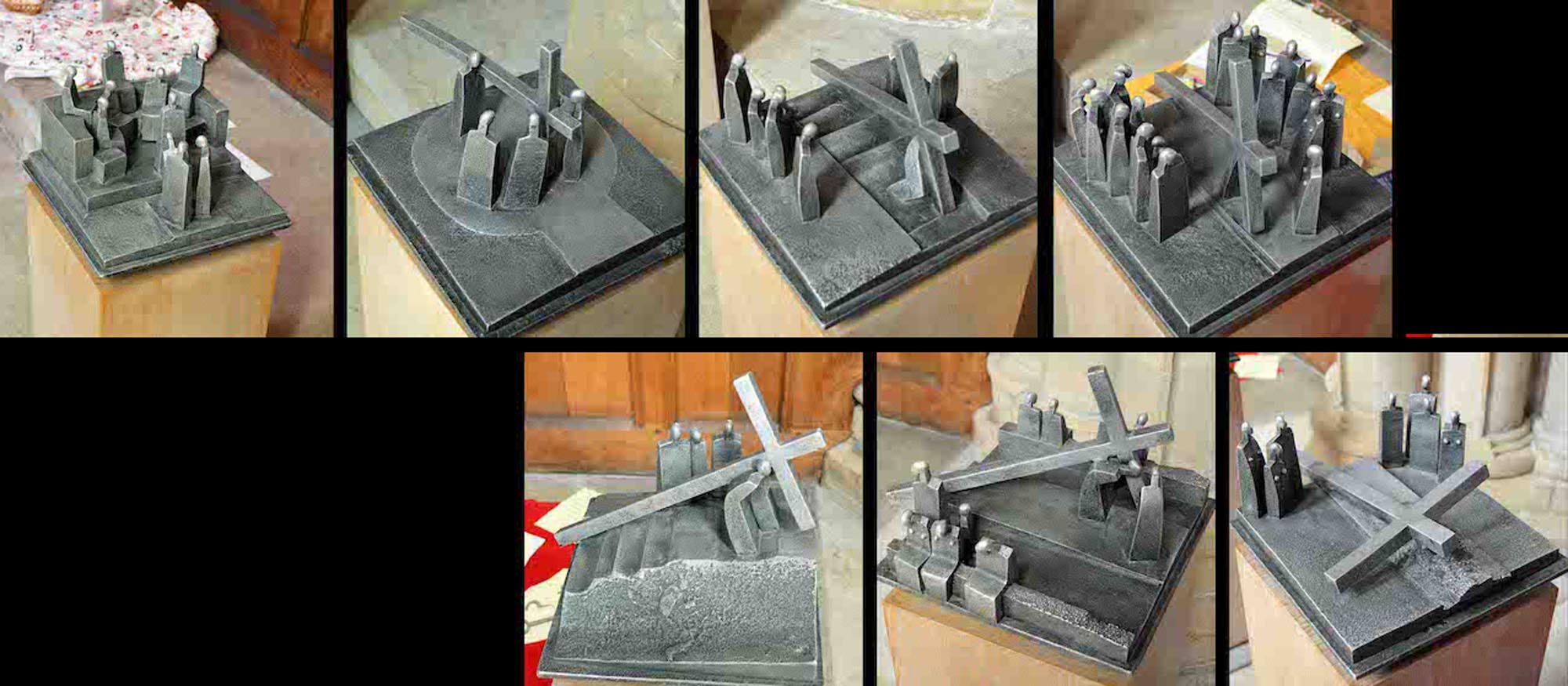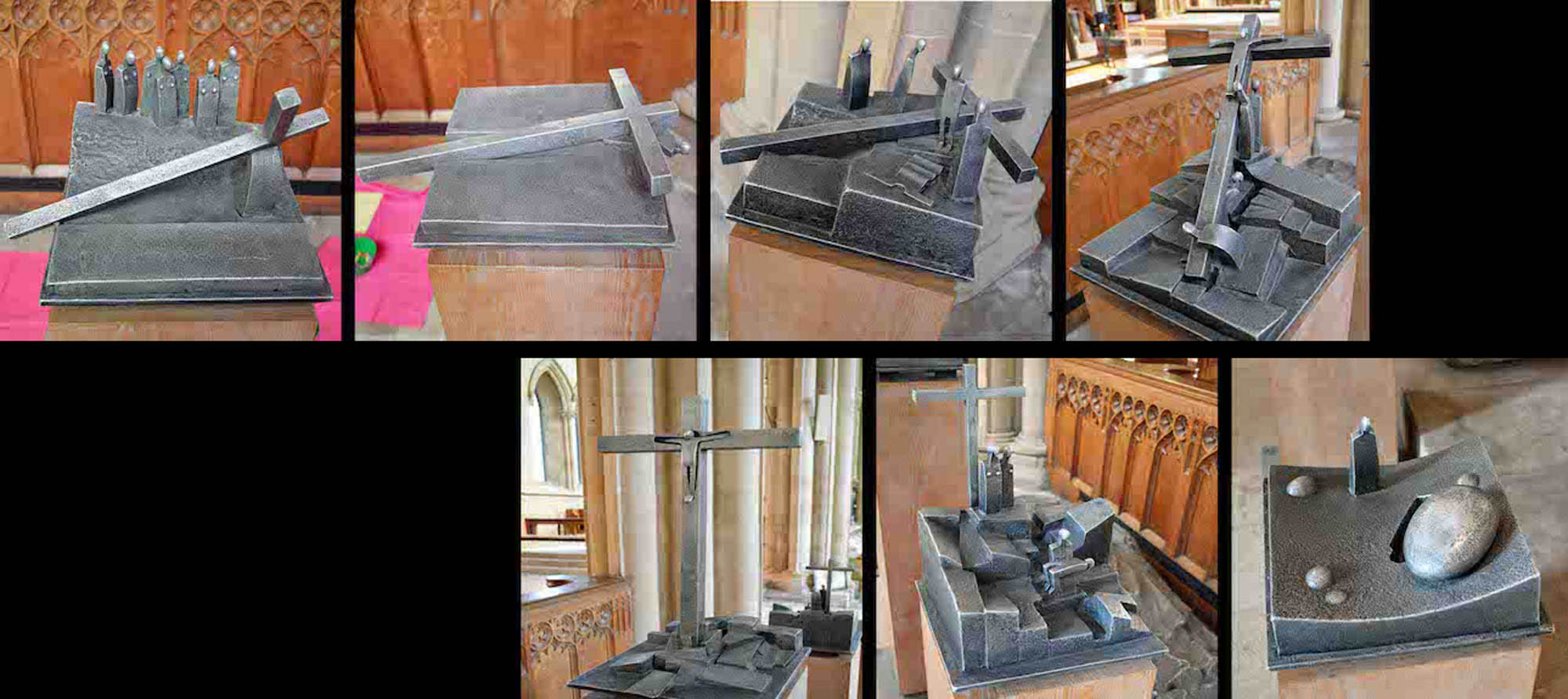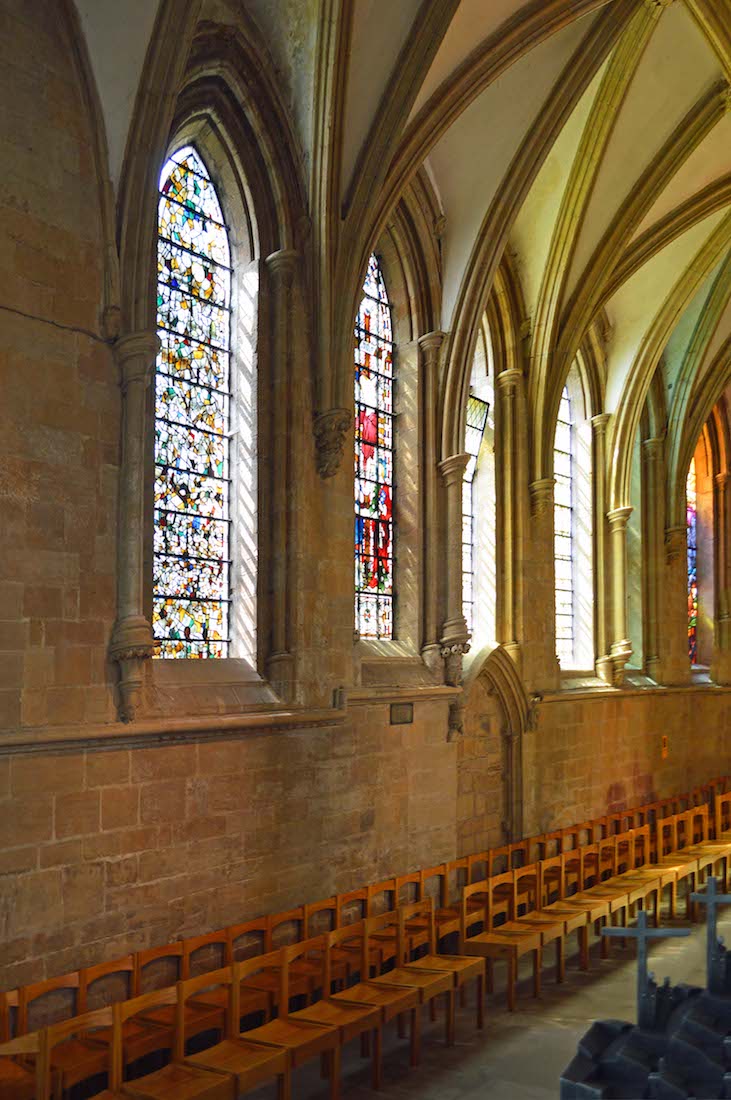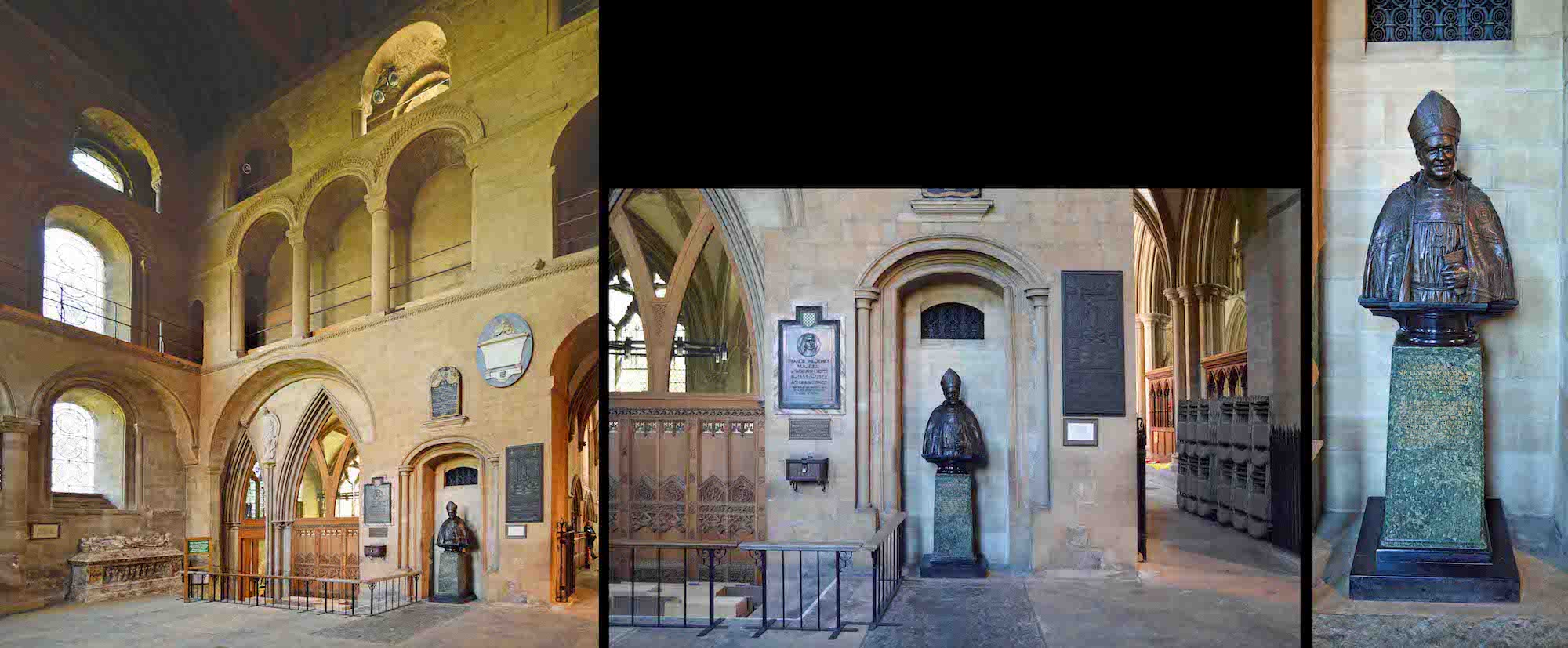
To the left of the steps is the red-veined Sandys monument. To the right are bronze memorials to 17th century author and naturalist Francis Willoughby, and to J. J. Trebeck who was Rector and the first Sub-Dean when the Minster became a Cathedral in 1884. And the prominent bronze bust by W. Reynolds-Stephens is of Sir Edwyn Hoskyns, the second Bishop of Southwell. PLAN
42. SANDYS EFFIGY
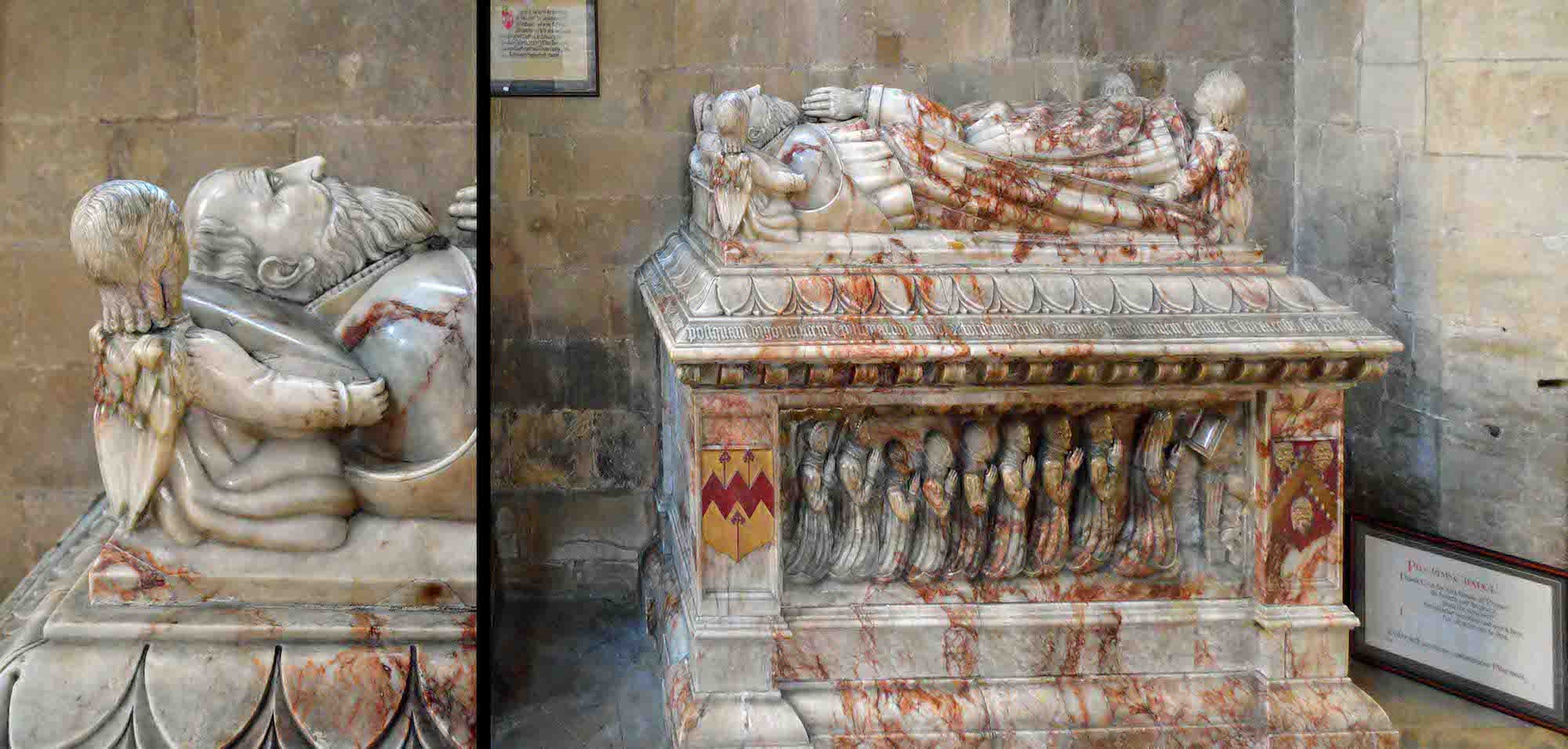
Edwin Sandys died in 1588. He was the Archbishop of York. The carving on the front is of his family in mourning with sons preceding daughters, regardless of age. As a Low Churchman, he might not have approved of his marble figure dressed in full episcopal robes.
43. TO THE PILGRIMS’ CHAPEL
We descend the steps to the Pilgrims’ Chapel. Above us and between the arches is a modern sculpture of ‘The Millenial Pilgrim’ by Roy Young.
44. PILGRIMS’ CHAPEL
This is a light airy chapel set aside as a quiet place for prayer. We might notice the central Cross and the painting by the entry at left, and the interesting window on the North wall. Just behind the altar at right is an alcove with a sculpted grouping of the Holy Family. On the South wall we see the aumbry holding the Blessed Sacrament, and a tapestry above. The tapestry by Geraldine Brock has a theme of pilgrimage, and celebrates 150 years of policing.
45. CROSS AND PAINTING
The central three-dimensional Cross with crown of thorns in black and gold is particularly striking. At top is a gold ‘INRI’, and there are three gold nails. The painting by the door is of a young lady reading – perhaps on a pilgrimage of her own?
46. CHAPEL WINDOW AND HOLY FAMILY
The window shows the Crucifixion with the crucified Christ at centre and St Mary and St John nearby. Above are two angels holding a chalice of wine and a wafer, the Christ symbols Alpha and Omega, and a pelican drawing blood from her breast to feed her chicks. The sculpture of the Holy Family shows Joseph and Mary with the Boy Jesus, aged perhaps twelve? This would correspond to the time when the lost Jesus was found teaching in the Temple.
48. QUIRE CANDELABRA AND LECTERN
Entering the quire we notice another eagle lectern, and the magnificent candelabra. The original Norman quire was demolished in 1240 and swiftly rebuilt twice the size in the markedly different style of early English Gothic. The columns are slender and fluted, and the soaring arches are sharply pointed. The triforium and clerestory are no longer separate storeys, but are compresed under twin lancet arches.
49. QUIRE SCREEN AND ORGAN
The quire screen and organ pipes are much more attractive when seen from this side! Notice the three small golden figures at the centre: Mary and the Baby Jesus with an angel standing on either side. The four blocks of quire stalls nearest the pulpitum were put in place in 1886. The six stalls under the pulpitum are for senior clergy. These have some outstanding 14th century misericords including this ‘green man’. [Photo Credit: Wikimedia]
50. LOOKING TO THE SANCTUARY
Looking East from the quire we have this view of the sanctuary. For now we shall investigate the quire pulpit at left, and return to the sanctuary later. The cross aisle just in front of the altar rail forms a natural marker between the quire, and the sanctuary and East chapels.
51. QUIRE PULPIT
The quire pulpit is a striking piece of wooden furniture with the carved central panel depicting St Mary holding the Christ Child. The long held cathedral practice of conducting worship services in the nave and in the quire necessitates having two lecterns and two pulpits.
52. SOUTH TRANSEPT
We now leave the quire, and turn to the South transept. On our left is a wooden statue of the Virgin and Child carved by Alan Coleman in 1952. The transept is lit by further grissaille-like windows on the South and West (right) walls. On our right is a bas relief of the holy Family – ‘The Flight into Egypt’. On the left wall is a WWI Honours Roll and a shrine.
53. TRANSEPT EAST WALL
The WWI Memorial by W. D. Caröe dates from 1920. The small sculpture is by Peter Ball. This pietà shows a figure of the sorrowing Mary that is in marked contrast to the upright Madonna, and is somehow appropriately placed next to the War Memorial.
54. SOUTH TRANSEPT WINDOWS
The top round windows in this transept are in coloured stained glass. The remaining windows are mostly in shades of grey. The rope moulding around the top of the triforium Norman windows is noteworthy.
55. TRANSEPT SOUTH WINDOWS DETAIL
Here we can see the transept South windows in detail. The long history of this Cathedral is reflected in the different styles and sizes of the various windows. Nothing planned from the beginning and then worked through!
56. TRANSEPT WEST WINDOWS DETAIL
The West windows form a more uniform set. The second window from the left is of special interest in that it remembers the Royal British Legion of Nottinghamshire.
57. SOUTH QUIRE AISLE
Leaving the South transept we proceed Eastwards along the South quire aisle. The most interesting aspect of this aisle – and indeed, for me, one of the most memorable aspects of this Cathedral – is the set of three-dimensional Stations of the Cross.
58. STATIONS OF THE CROSS 1 – 7
The Stations of the Cross are made in sand cast aluminium by Jonathan Clarke. They are impressive and visitors are encouraged to touch the sculptures. Stations of the Cross are found world-wide, particularly in Catholic churches, but I have never seen a set like this. The Stations are used as an aid to devotion as Christians seek to retrace the last journey of Jesus to the cross.
59. STATIONS OF THE CROSS 7–14
The Stations of the Cross are listed as: 1. Pilate condemns Jesus to die 2. Jesus accepts his cross 3. Jesus falls for the first time 4. Jesus meets his mother, Mary 5. Simon of Cyrene helps carry the cross 6. Veronica wipes the face of Jesus 7. Jesus falls for the second time 8. Jesus meets the women of Jerusalem 9. Jesus falls for the third time 10. Jesus is stripped of his clothes 11. Jesus is nailed to the cross 12. Jesus dies on the cross 13. Jesus is taken down from the cross 14. Jesus is placed in the tomb.
60. SOUTH QUIRE AISLE WINDOWS
This is a view looking down the window wall of the South quire aisle. It is a little hard to tell, but there are actually six windows along this stretch. On the other hand, two of them are lattice with clear glass.


